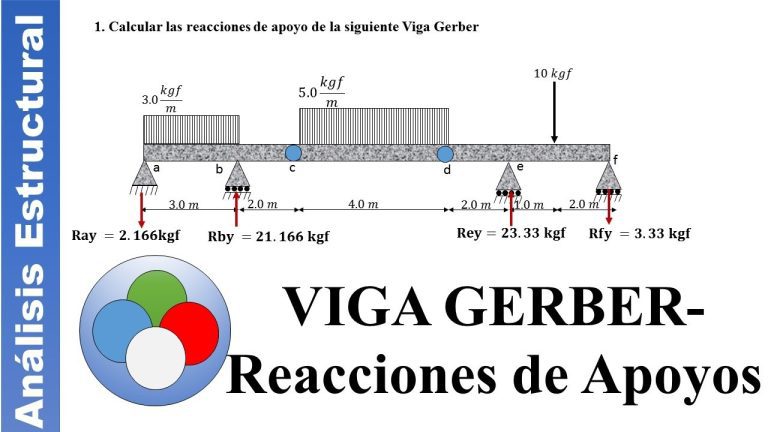Descarga el PDF definitivo sobre la automatización en la construcción
1. Understanding the Impact of Automation in Construction
In recent years, the construction industry has experienced a significant shift due to the introduction of automation. This technological advancement has brought about numerous changes and has had a profound impact on the industry as a whole.
One of the main advantages of automation in construction is the significant increase in productivity. With machines and robots being able to perform tasks at a much faster pace and with a higher level of accuracy, construction projects can be completed in a shorter amount of time. This not only saves costs but also allows for more projects to be undertaken simultaneously.
Furthermore, automation has also enhanced safety on construction sites. Dangerous tasks that were previously carried out by human workers can now be done by machines, reducing the risk of accidents and injuries. This is particularly beneficial in hazardous environments such as working at heights or handling heavy machinery.
Additionally, the use of automation in construction has led to improved quality control. Machines can consistently perform tasks with precision, minimizing errors and ensuring a higher level of accuracy in measurements and installations. This results in buildings that are structurally sound and meet the required standards, ultimately increasing customer satisfaction.
2. The Role of Robotics in Construction Automation
Robotics is revolutionizing the construction industry by transforming traditional construction methods into automated processes. The use of robots in construction automation is becoming increasingly common due to the numerous benefits it offers, such as improved efficiency, enhanced safety, and reduced labor costs.
Robots are capable of performing repetitive and mundane tasks with precision and accuracy, which significantly speeds up construction projects. For example, robotic arms can be programmed to carry heavy loads and perform tasks like bricklaying or welding, eliminating the need for manual labor. This not only saves time but also reduces the risk of injuries that may occur in such physically demanding tasks.
In addition to enhancing efficiency, robotics in construction automation also helps improve safety on construction sites. Robots can be used in hazardous environments or situations where human access is limited or dangerous. They can perform tasks such as inspecting structures, detecting faults, or even demolishing unsafe structures without putting human lives at risk.
Another advantage of incorporating robotics into construction automation is the significant reduction in labor costs. While the initial investment in robotic systems may be substantial, they can work continuously without breaks and do not require wages or benefits. This not only results in cost savings but also frees up human labor for more complex and creative tasks that cannot be easily automated.
3. Increasing Efficiency and Safety with Automated Construction Equipment
In today’s fast-paced construction industry, time is money. Construction projects often face tight deadlines and budget constraints, making it crucial for companies to find ways to increase efficiency without compromising safety. This is where automated construction equipment comes into play.
Automated construction equipment, also known as robotics and drones, has revolutionized the way construction companies operate. These advanced technologies offer a wide range of benefits, from improved productivity to enhanced safety measures.
One of the key advantages of automated construction equipment is its ability to complete tasks at a faster pace. Robots and drones can perform repetitive and labor-intensive tasks with precision and accuracy, significantly reducing the time required to complete a project. This increased efficiency allows construction companies to meet deadlines more effectively, improving customer satisfaction and potentially increasing profitability.
Furthermore, automated construction equipment also enhances safety on construction sites. By replacing human workers in hazardous environments or high-risk tasks, the risk of accidents and injuries is greatly diminished. These machines are built with advanced safety features and can be remotely monitored, minimizing the potential dangers that human workers might face in dangerous scenarios.
Improved Productivity and Accuracy
Automated construction equipment eliminates the limitations that human workers might face due to physical exhaustion, lack of attention, or human error. These machines operate consistently at peak performance, ensuring tasks are completed accurately and efficiently. This not only increases productivity but also reduces the chance of errors and rework, saving valuable time and resources.
In conclusion, automated construction equipment is a game-changer for the industry. By increasing efficiency and safety, these technologies can have a significant impact on construction projects’ success. Construction companies can take advantage of robotic and drone technologies to streamline operations, meet project deadlines, and ultimately improve overall profitability. Embracing automation in construction is not just a trend, but a necessity in today’s competitive market.
4. Key Trends in Automation Software for Construction
Automation is revolutionizing the construction industry, and as technology continues to advance, it’s essential for construction professionals to stay informed about the key trends in automation software.
One significant trend is the integration of Building Information Modeling (BIM) with automation software. BIM allows construction teams to create digital representations of buildings, making it easier to visualize and analyze construction projects. By combining BIM with automation software, construction teams can streamline processes, improve collaboration, and reduce errors. With the ability to automate repetitive tasks and generate accurate reports, BIM-integrated automation software is becoming an indispensable tool for construction projects of all sizes.
Another trend is the adoption of drones in construction. Drones equipped with high-resolution cameras and sensors can capture detailed images and collect data from construction sites. By using automation software to analyze this data, construction professionals can monitor progress, identify potential issues, and make informed decisions in real-time. Drones not only save time and cost but also improve safety by reducing the need for manual inspections.
Additionally, the use of artificial intelligence (AI) is transforming the construction industry. AI-powered automation software can analyze vast amounts of data, enabling construction professionals to optimize project schedules, predict potential risks, and enhance resource allocation. AI algorithms can also learn from historical project data, making future construction processes more efficient. From project planning to quality control, AI automation software is enhancing productivity and driving innovation in the construction sector.
In conclusion, the key trends in automation software for construction include the integration of BIM, the adoption of drones, and the use of AI. These advancements are revolutionizing the way construction projects are planned, executed, and monitored. By embracing these trends, construction professionals can leverage automation software to improve efficiency, productivity, and ultimately deliver better results in the ever-evolving construction industry.
5. The Future of Construction: Embracing Automation
Automation is revolutionizing the construction industry and shaping its future. With advancements in technology, construction companies are now embracing automation to streamline processes, increase efficiency, and reduce costs.
One of the key areas where automation is making a significant impact is in the field of robotic construction. Robots are being used for various tasks, such as bricklaying, concrete pouring, and even site surveying. These robots are designed to work faster and more accurately than their human counterparts, resulting in faster construction times and higher quality structures.
Furthermore, automation is also being integrated into construction equipment and machinery. Smart machinery can now perform tasks autonomously, with the help of sensors and artificial intelligence. This allows construction companies to increase productivity and ensure worker safety by reducing the need for manual labor in hazardous situations.
Another notable trend in the future of construction is the use of 3D printing technology. This innovative technique enables construction companies to create complex structures with precision and speed. By utilizing 3D printers, architects and engineers can turn digital designs into physical structures, reducing construction time and minimizing material waste.
Embracing Automation in Construction: Benefits and Challenges
While the benefits of embracing automation in construction are undeniable, there are also challenges that need to be addressed. One major concern is the potential displacement of jobs. As automation takes over repetitive and manual tasks, there is a need for companies to reskill their workforce to ensure they remain relevant in the changing industry.
Additionally, the upfront investment required for implementing automation technologies can be substantial. However, companies that successfully integrate automation into their processes can expect long-term cost savings and increased competitiveness.
In conclusion, the future of construction lies in embracing automation. By leveraging robotics, smart machinery, and 3D printing technology, construction companies can significantly improve productivity, quality, and safety. While challenges exist, the benefits outweigh them, making automation an essential aspect of the construction industry moving forward.







